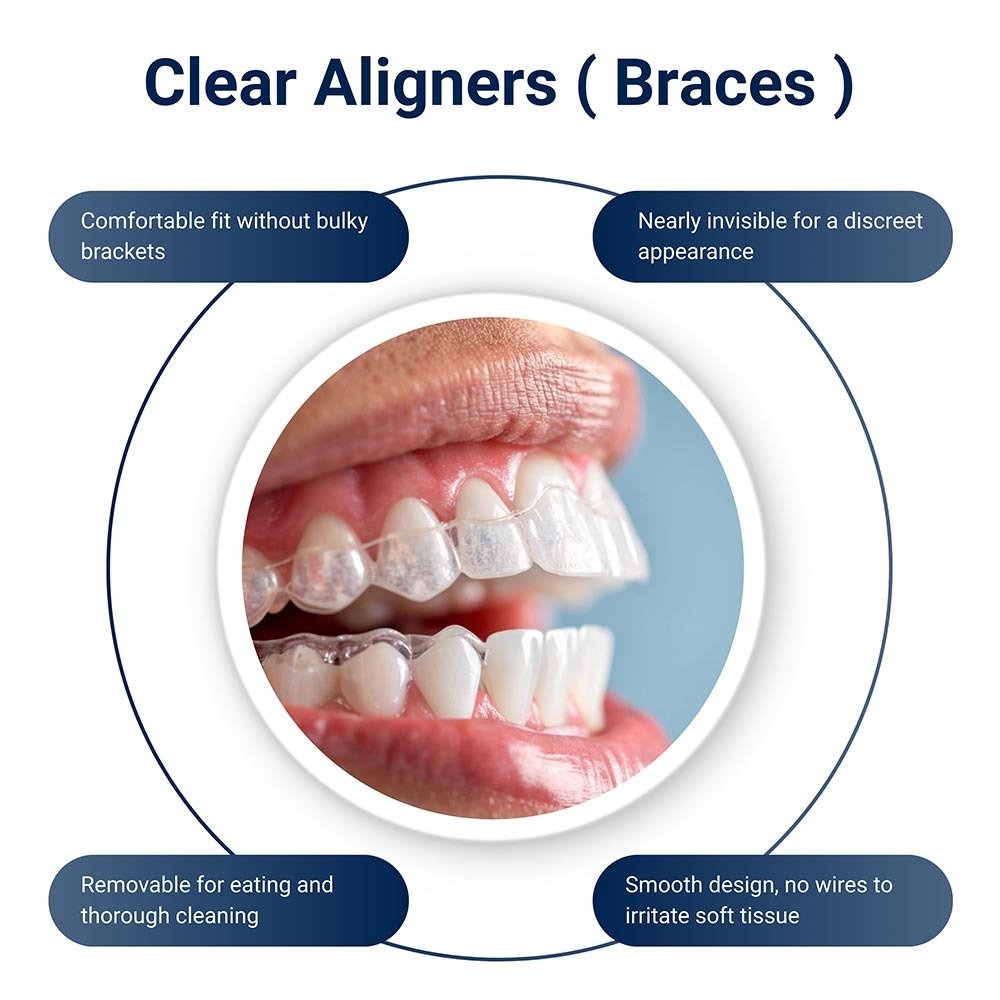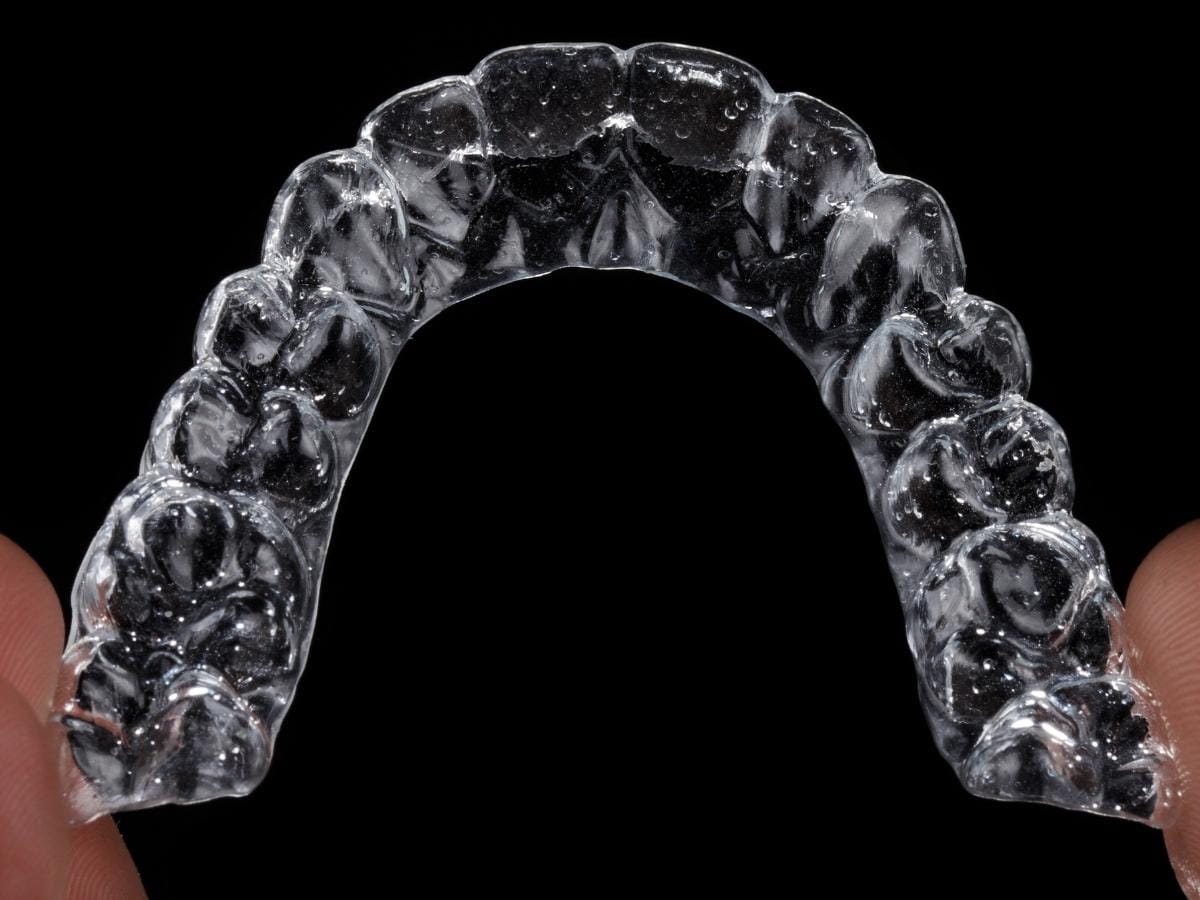Made of a ceramic material designed to match the color of the teeth, clear braces provide results comparable to those of metal braces, but without the metal-colored wires and brackets. Clear braces correct a crooked smile or bite problem, while essentially camouflaging the equipment being used.
The same routine orthodontic care and daily cleaning are as necessary for clear braces as for metal ones, as is the requirement that a retainer be worn at night, for a period of years, to keep teeth in the correct position permanently.
Wearing Clear Braces
Patients who decide to wear clear braces are fitted with removable orthodontic aligners that are adjusted as their teeth shift. No metal or wires are involved. Usually, each set of aligners is worn for 2 weeks, during which time the teeth gradually shift into their correct positions. On average, treatment takes between 6 and 18 months.

Benefits of Clear Braces
Because clear braces are nearly invisible, they offer a significant advantage to people who do not want it to be obvious that they are wearing braces. This may be especially important to business professionals who are required to make presentations or speeches. Other benefits of clear braces include the following:
- Comfortable
- Smooth, with no wires to snag on soft tissue
- Patients can eat whatever they want
- Removable for effective cleaning
That clear braces do not have wires or brackets to irritate the mouth is a significant advantage, offering a much greater degree of comfort to the patient, and preventing the development of small oral sores. That clear braces are removable is also beneficial because it means that the patient can remove them for eating, and clean both the teeth and the apparatus with a thoroughness not possible with metal braces. This helps to maintain dental health and prevent plaque buildup.
Disadvantages of Clear Braces
Although clear braces are often a successful alternative to metal braces, there are times when they do not work as well. Metal braces may be required in the following instances:
- Teeth are severely crooked
- There is a significant bite problem
- Teeth are of differing heights
- Teeth are severely rotated out of position
In such situations, traditional metal braces are likely to provide better results, and more quickly. Other disadvantages are that the adhesive used with clear braces can become stained if the patient smokes or drinks dark beverages, and that clear braces are more costly than metal ones.
Clear braces offer a discreet and comfortable solution to achieving a straight smile. At Clock Tower Dental, our team is committed to helping you find the best options for your dental health. Make an appointment today to start your journey to a healthy and confident smile!
Additional Resources
- Medline Plus
- National Institutes of Health
- National Institute of Dental and Craniofacial Research
- Centers for Disease Control and Prevention
- Eunice Kennedy Shriver National Institute of Child Health and Human Development
- U.S. Department of Health & Human Services
- U.S. National Library of Medicine
- WebMD

